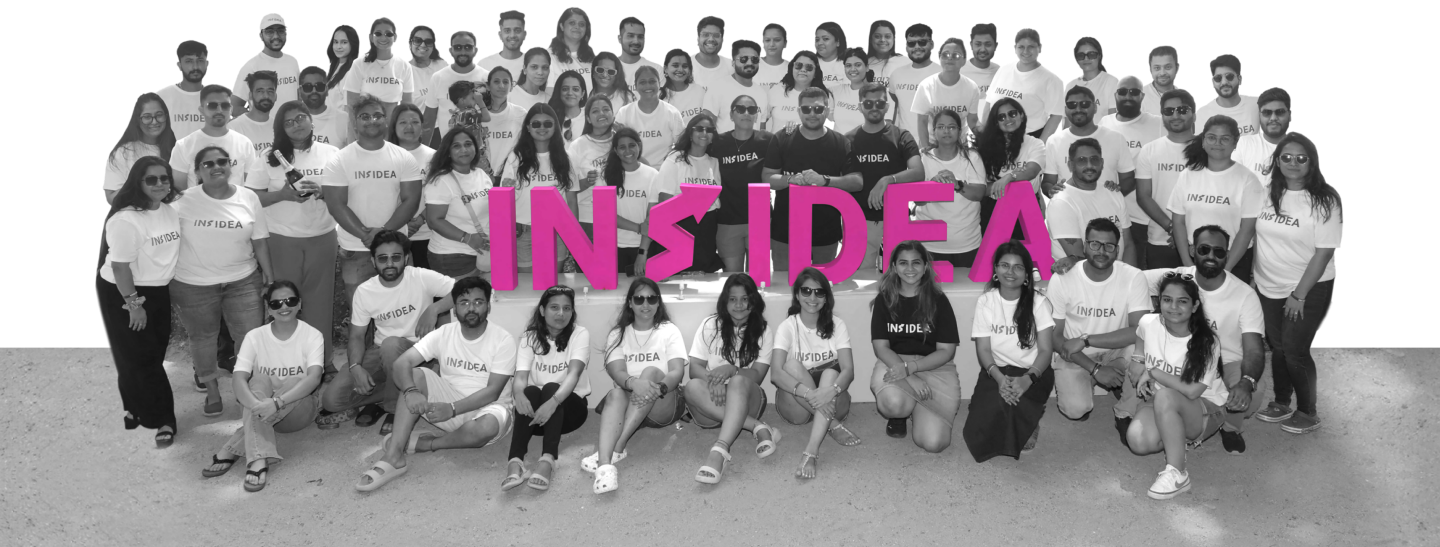Where efficiency and expertise are paramount, virtual research assistants are becoming invaluable assets in various research endeavors. Whether you’re a professional, an academic researcher, or a curious individual looking to streamline your research projects, understanding the role and potential of a virtual research assistant is crucial.
Today, we will explore what a virtual research assistant is, the diverse tasks they can handle, and the multitude of benefits they bring to any research project. From enhancing productivity to providing specialized skills and offering flexible working solutions, VRAs are reshaping the landscape of research in numerous fields.
What is a Virtual Research Assistant?
A virtual research assistant is a professional who provides research support services remotely. They are equipped to handle various tasks, including data collection, analysis, literature reviews, preparing reports, and more. The beauty of VRAs lies in their flexibility and adaptability to a wide range of research needs.
The scope of a VRA’s work can be vast. They can assist you with academic research, market research, data collection, setting up surveys, and compiling research materials. In essence, a VRA can take on any task that doesn’t require their physical presence, making them a versatile asset in any research project.
A VRA not only saves you time by handling time-consuming tasks but also brings a fresh perspective to your work. Their expertise in various research methodologies and tools can significantly enhance the quality and efficiency of your research outcomes.
Why Should You Hire A Virtual Research Assistant
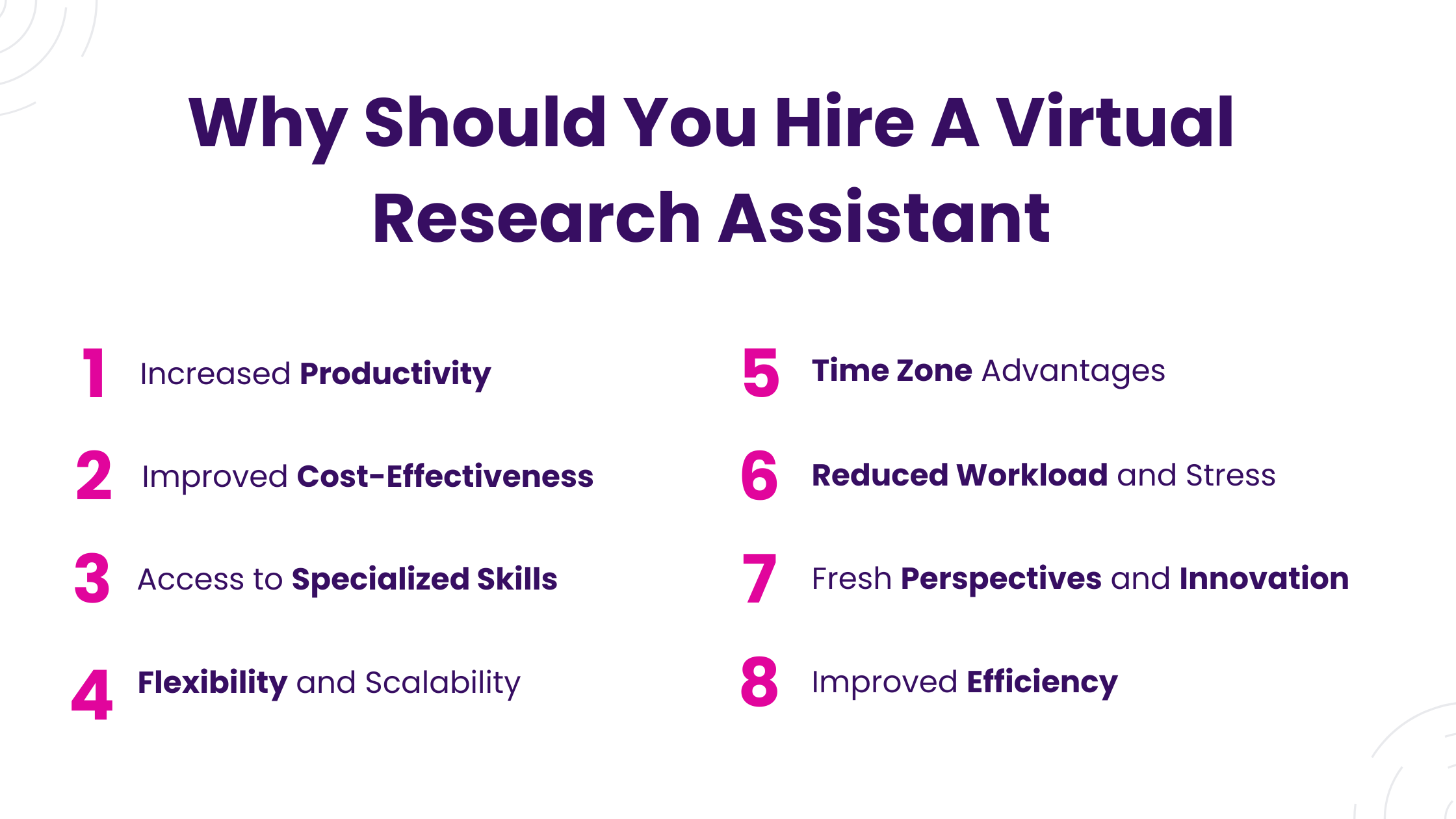
Hiring a virtual research assistant offers a myriad of benefits that can significantly enhance the efficiency and effectiveness of your research projects. Here are some key advantages:
- Increased Productivity: VRAs handle various research tasks, allowing you to focus on more critical aspects of your project or business. By delegating time-consuming tasks such as data collection, literature reviews, and data analysis, you can concentrate on analysis, strategy, and decision-making.
- Improved Cost-Effectiveness: Hiring a VRA is often more cost-efficient than employing a full-time in-house research assistant. You save on expenses related to office space, equipment, and employee benefits. Furthermore, VRAs are typically paid only for the hours they work or for specific tasks, offering greater budget flexibility.
- Access to Specialized Skills: Many VRAs have specialized skills and expertise in specific research methodologies, statistical analysis, or using advanced research tools. This expertise can significantly improve the quality of your research outcomes.
- Flexibility and Scalability: Virtual research assistants offer flexibility in terms of working hours and can be scaled up or down depending on your project needs. This is particularly useful for businesses with fluctuating research needs or for project-based work.
- Time Zone Advantages: If your VRA is in a different time zone, it can be advantageous. They can work on tasks while you are off-duty, effectively extending your productive hours. This can speed up the research process and help meet tight deadlines.
- Reduced Workload and Stress: Delegating tasks to a virtual research assistant can significantly reduce your workload, thereby decreasing stress and freeing up time for personal development or other work responsibilities. This can lead to a better work-life balance.
- Fresh Perspectives and Innovation: A VRA can bring new perspectives to your research, offering innovative ideas and solutions that you might not have considered. This diversity of thought can be invaluable in research and problem-solving.
- Improved Efficiency: With a virtual research assistant handling the groundwork of research, you can expect more streamlined operations. They can organize data, manage databases, and prepare reports, making it easier for you to access and utilize information.
Setting Clear Objectives for Your Virtual Research Assistant
Establishing clear objectives for your virtual research assistant is critical for several reasons. It ensures that both you and your assistant understand the expected outcomes, helps in measuring performance, and keeps the project on track. Clear objectives also provide a framework for your VRA to prioritize tasks and allocate their time effectively.
- Define the Scope of Work
- Outline Specific Tasks: Start by listing the specific tasks you expect your virtual research assistant to handle. This could include data collection, analysis, literature reviews, drafting reports, or managing databases.
- Detail the Work Process: Explain how these tasks fit into the larger project. This context helps your VRA understand the importance of each task and how they contribute to the overall goals.
- Set Measurable Goals
- Quantifiable Objectives: Establish goals that are measurable. For example, if your virtual research assistant is conducting a literature review, specify how many sources you expect them to review or the number of summaries you need.
- Timeline and Deadlines: Provide a clear timeline for each task and overall project deadlines. This helps in planning and ensures that work is completed in a timely manner.
- Clarify Quality Expectations
- Detail Desired Outcomes: Describe what a successfully completed task looks like. If it’s a report, what kind of information should it include? What format should it be in?
- Provide Examples: Wherever possible, give examples of similar work or templates. This can be a benchmark for your VRA to understand the quality and style expected.
- Communicate Priorities
- Rank Tasks: Make it clear which tasks are high priority and which can take a backseat when necessary. This helps your virtual research assistan in managing their workload effectively.
- Flexibility for Changing Priorities: Acknowledge that priorities may shift and ensure there’s a process for communicating these changes.
- Establish Checkpoints
- Regular Check-ins: Set up regular meetings or progress reports. This allows you to monitor progress, provide feedback, and make adjustments to objectives as needed.
- Feedback Mechanism: Create a clear process for feedback, both positive and constructive. This helps in maintaining the quality of work and aids in the professional development of your VRA.
- Provide Resources and Support
- Access to Tools and Information: Ensure your VRA has access to all necessary tools, databases, and information required to complete their tasks.
- Support for Skill Development: If certain tasks require specific skills, consider providing access to training or resources to develop those skills.
Hiring the Right Virtual Research Assistant
Selecting the right virtual research assistant is a critical step in enhancing your research capabilities. By focusing on these key areas, you can find a candidate who not only has the right skills but also aligns well with your project’s objectives and working style.
I. The Key Qualifications and Skills to Look for While Hiring A Virtual Research Assistant

- Research Skills: Proficiency in research methodologies, data analysis, and experience in specific types of research (such as market research or academic research) is crucial.
- Technical Proficiency: Familiarity with research tools, databases, and software relevant to your field. This might include statistical analysis software, data mining tools, or specific database knowledge.
- Communication Skills: Effective communication is key in a remote working relationship. Look for someone who can clearly articulate ideas, provide updates, and understand your instructions.
- Organizational Abilities: A good VRA should be able to manage and prioritize tasks effectively, especially when handling multiple aspects of a project.
- Problem-Solving Skills: The ability to think critically and solve problems independently is invaluable, particularly when unforeseen challenges arise.
- Attention to Detail: Precision is vital in research. A keen eye for detail ensures accuracy in data collection and analysis.
- Language Skills: Depending on your research, fluency in certain languages may be necessary.
II. Interviewing and Selecting the Right Candidate
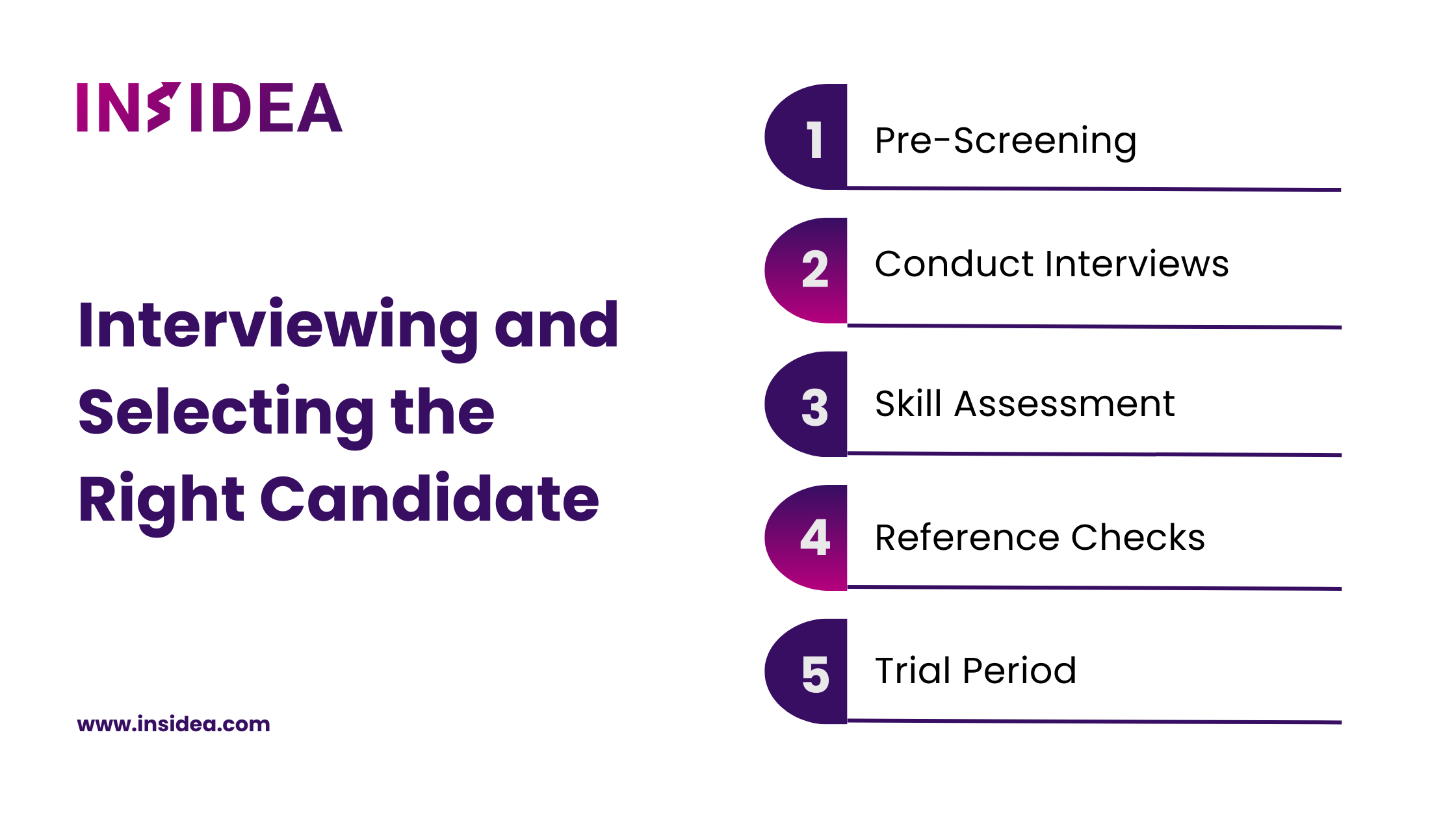
- Pre-Screening: Review applications and resumes to shortlist candidates who meet your specific requirements.
- Conduct Interviews: Use interviews to assess the candidates’ communication skills, understanding of research methodologies, and ability to fit into your project’s needs. Ask about their previous research projects and how they approached specific challenges.
- Skill Assessment: Consider giving a short task or a case study relevant to your research. This can provide insight into their practical skills and how they approach real-world problems.
- Reference Checks: Contact their previous employers or clients to verify their work quality and reliability.
- Trial Period: Offering a trial period can be an effective way to evaluate the VRA’s performance and compatibility with your project before making a long-term commitment.
III. Onboarding Your Virtual Research Assistants
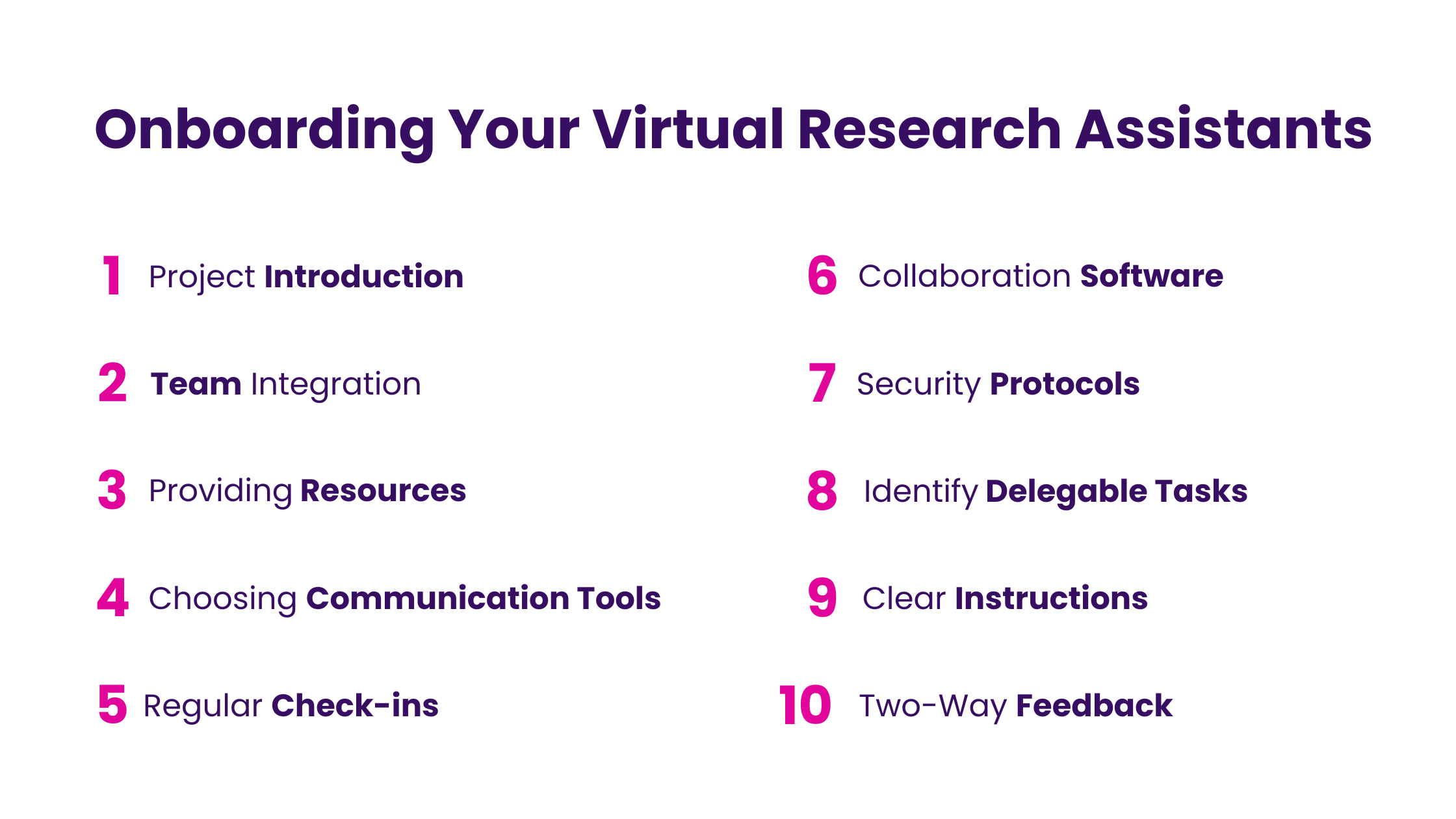
The initial step in ensuring a successful collaboration with your virtual research assistant is a thorough onboarding process. This phase is crucial as it sets the tone for your working relationship and aligns the VRA with your project’s goals and methodologies.
- Project Introduction: Begin by providing a comprehensive overview of your project. This should include the project’s objectives, timelines, key stakeholders, and expected outcomes. The more your VRA understands the big picture, the better they can contribute to your specific needs.
- Team Integration: If your project involves a team, introduce your virtual research assistant to your team members. This can be done through a virtual meetings. Familiarizing them with each team member’s role and how they will interact with the VRA helps in building a cohesive working environment.
- Providing Resources: Share essential documents, previous research, and any other relevant materials. Access to these resources will help your virtual research assistant to quickly get up to speed with the project specifics.
- Choosing Communication Tools: Select communication tools that are convenient for both parties. This could include email, instant messaging apps, video conferencing tools, or project management software. The chosen tools should support both formal and informal modes of communication.
- Regular Check-ins: Schedule regular check-ins (video calls, phone calls, etc.) to discuss progress, address any challenges, and provide feedback. These meetings are vital for keeping the project on track and for building rapport with your virtual assistant.
- Collaboration Software: Use project management and collaboration tools like Asana, Trello, or Slack to organize tasks, deadlines, and to-dos. These tools provide visibility into what everyone is working on and help keep the project organized.
- Security Protocols: Given the online nature of the collaboration, it’s important to establish security protocols. This includes guidelines on how to handle sensitive information, data privacy, and ensuring secure communications.
- Identify Delegable Tasks: Start by identifying tasks that can be efficiently handled by your VRA. These could range from data collection and analysis to preparing literature reviews and reports. Ensure that these tasks are within the skill set of your VRA.
- Clear Instructions: Provide clear and concise instructions for each task. This includes the scope of the work, specific details on what needs to be done, and any preferences or methodologies you want them to follow.
- Two-Way Feedback: Encourage your VRA to provide feedback on their experience working with you. This can provide valuable insights into improving the working relationship.
By carefully managing these aspects of the onboarding process, communication, and workspace setup, you can create a strong foundation for a productive and efficient working relationship with your Virtual Research Assistant.
Redefine Busine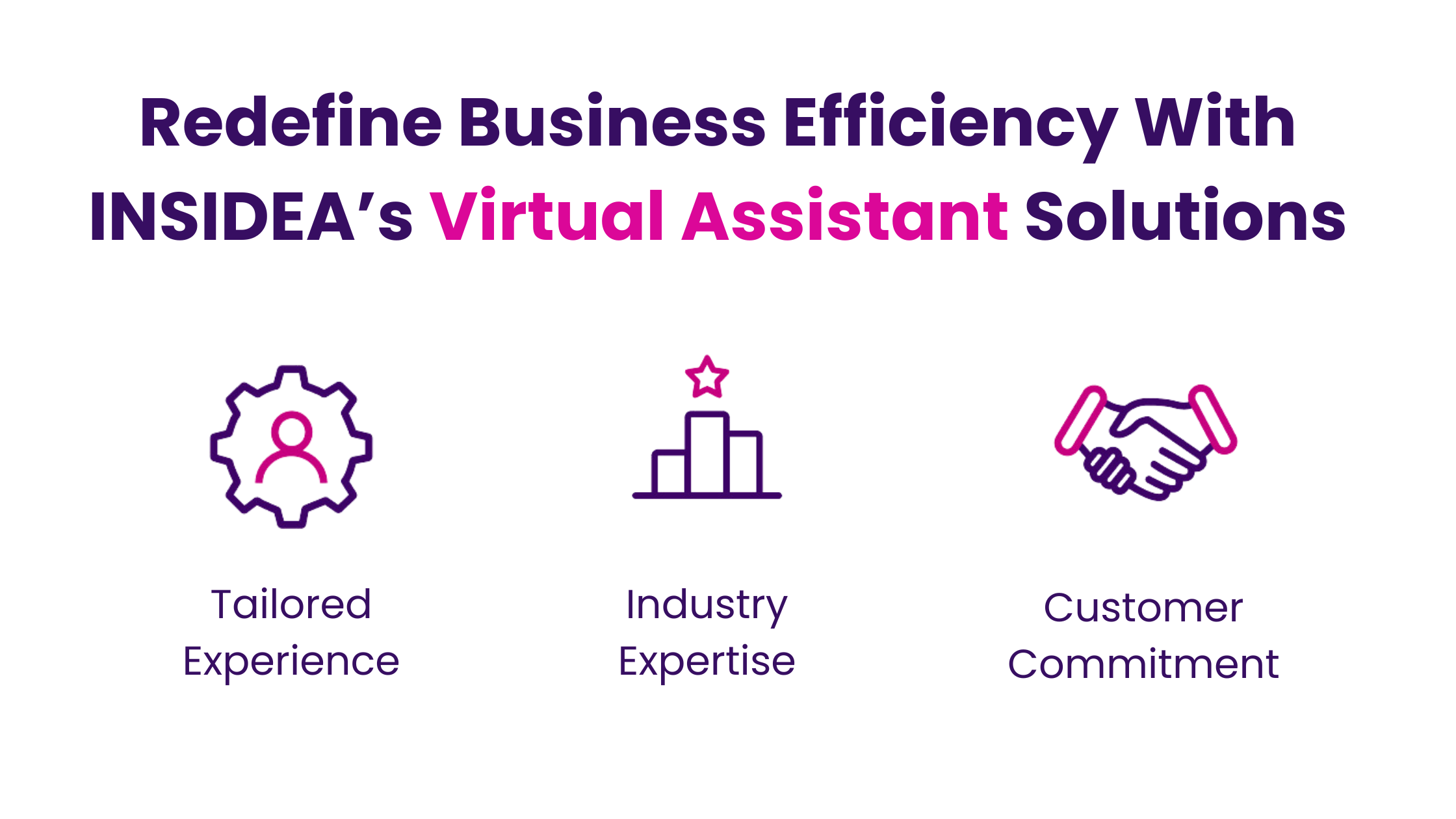 ss Efficiency With INSIDEA’s Virtual Assistant Solutions
ss Efficiency With INSIDEA’s Virtual Assistant Solutions
Investing in virtual assistant services yields significant returns, considering their many advantages for your business. By incorporating skilled virtual assistants into your customer service strategy, you not only elevate the quality of your customer interactions but also pave the way for enhanced customer loyalty and overall business success. Virtual assistants are more than just a resource; they are a transformative element in customer service, driving your business toward its goals with efficiency and expertise.
Are you looking to enhance your business operations with unparalleled efficiency and expertise? INSIDEA is here to guide you through the world of virtual assistant services, offering tailored solutions that cater precisely to your business needs. Connect with us now to explore how our virtual assistant expertise can be a game-changer for your business success!
Tailored Solutions: Understanding that each business has unique challenges and objectives, INSIDEA specializes in crafting personalized virtual assistant strategies. We align our services with your business requirements, ensuring a perfect fit for your operational needs.
Industry Expertise: Our team is not just skilled; they’re seasoned experts in virtual assistance. With a deep understanding of various industries, we bring you the best practices, cutting-edge tools, and insights to maximize the effectiveness of your virtual assistant services.
Customer Commitment: At INSIDEA, your business goals are our mission. We are committed to empowering your business with virtual assistants who are skilled and aligned with your vision, driving your business towards remarkable achievements.
Ready to unlock the full potential of your business with expert virtual assistant services? Book a meeting with our experts today and start your journey towards redefining business efficiency.


